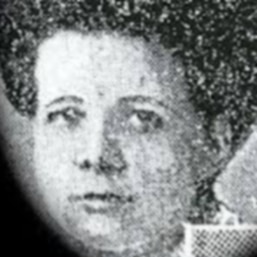
1875 - 1914
Augusta Fairfield Fullam
Summary
Name:
Augusta Fairfield FullamNickname:
GussieYears Active:
1911 - 1912Birth:
June 23, 1875Status:
DeceasedClass:
MurdererVictims:
2Method:
PoisoningDeath:
May 28, 1914Nationality:
United Kingdom
1875 - 1914
Augusta Fairfield Fullam
Summary: Murderer
Name:
Augusta Fairfield FullamNickname:
GussieStatus:
DeceasedVictims:
2Method:
PoisoningNationality:
United KingdomBirth:
June 23, 1875Death:
May 28, 1914Years Active:
1911 - 1912Date Convicted:
February 26, 1913bio
Augusta Fairfield Goodwyn was born on June 23, 1875, in Calcutta, India. She was baptized on August 12, 1875, at the Methodist Episcopal Church in Calcutta. Augusta grew up in India, and little is known about her early education. It is believed she may have attended a convent school, possibly Loreto House, but there are no school records to confirm this.
Her father was Leonard Goodwyn, who worked as a Bengal River Pilot. Augusta had a sister named Dora and a half-sister, Catherine Burridge, from her mother's previous marriage to a music instrument dealer. Augusta's background was likely influenced by the cultural mix of India during the British Raj, where the term "Anglo-Indian" was used to describe Europeans born in India.
Described by writer Molly Whittington-Egan, Augusta was considered short and vivacious with a "china-doll complexion" and "springy brown tresses." On June 17, 1896, she married Edward McKeon Fullam in Barrackpore, about 15 miles from Calcutta. Edward, who was eight years older, worked as a clerk in the Indian Civil Service and later became Deputy Examiner in the Military Accounts Department at Meerut. Their marriage was marked by some differences in interests, as Edward was described as somewhat dull compared to Augusta’s lively personality.
The couple settled into life on military cantonments in Barrackpore and then moved to Meerut in 1908. They had three children together: Leonard, Kathleen, and Frank. In 1911, they moved to Agra, India, but Edward’s health began to decline. Despite these challenges, they maintained a life filled with social interactions, which Augusta enjoyed. She loved to party and engage in gossip.
murder story
Augusta Fullam and Henry Clark began their deadly plan when they started an affair while both were married. In the spring of 1911, Augusta became pregnant by Clark, who supplied her with drugs to terminate the pregnancy. Afterward, they decided to poison their spouses, making it look like natural deaths. Augusta began to poison her husband, Edward Fullam, using arsenic and other substances sent by Clark. Meanwhile, Clark tried to convince their cook to poison his wife, Louisa, but the cook alerted Louisa instead.
As Edward's health declined, he was deemed unfit for work and moved with his family to Agra. Just three days after the move, he died. His death was quickly followed by Clark moving in with the Fullams, filling the role of the man of the house. Augusta and Clark then turned their sights to Louisa. Clark enlisted a group of local criminals to kill her in what would look like a robbery. While Clark was out cycling to create an alibi, the badmashes entered the home and killed Louisa in front of her daughter.
The police began an investigation after Louisa's murder. Augusta's letters to Clark were discovered, revealing their conspiracy. Edward's body was exhumed, and arsenic was found, leading to the arrest of Augusta and Clark along with their accomplices. During the trial that gathered significant media attention, key witnesses included Maud Clark and Kathleen Fullam, who had witnessed the murders.
The jury returned guilty verdicts against Augusta and Clark, among others. On March 26, 1913, Clark and the hired criminals were hanged, while Augusta's sentence was commuted to life imprisonment due to her pregnancy. She gave birth to Clark's son in July 1913 and died from heatstroke a year later in prison. Her son was placed in an orphanage and later adopted, living a life without knowledge of his biological parents.